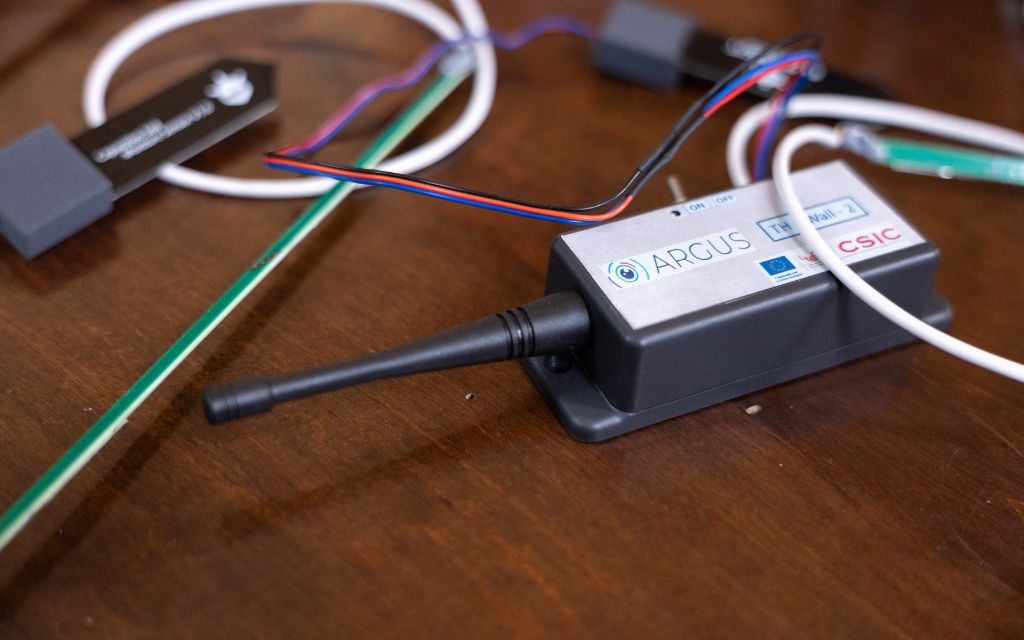Discover how memory-enabled, policy-aware AI agents are revolutionizing cultural heritage preservation by integrating the ABC model with semantic reasoning, risk forecasting, and explainable policy alignment.

Cultural heritage sites face growing risks from climate change, environmental stress, and human activity. Protecting these treasures isn't just about reacting to immediate damage, it's about planning for the future, understanding what happened in the past, and making smart, informed decisions today.
That’s where the latest research from the ARGUS Horizon Europe project comes in. A recent open-access publication, “Agentic AI for Cultural Heritage: Embedding Risk Memory in Semantic Digital Twins”, by George Pavlidis, ARGUS project coordinator and Research Director at "Athena" Research and Innovation Center, proposes a new way to combine Artificial Intelligence (AI), structured risk knowledge, and digital tools to help heritage sites not just survive, but thrive.
What Is Agentic AI, and Why Does It Matter?
Most AI used in cultural heritage today reacts to problems. For example, if a sensor detects too much moisture, the system might alert staff or suggest ventilation. But it doesn’t “remember” if this happened before, how serious it was, or what was done about it.
This research introduces Agentic AI, a new type of AI that can:
- Remember previous risks and how they evolved
- Reason about the best action to take, based on policies and values
- Simulate future scenarios to support better planning.
In short, it's not just smart, it’s thoughtful.
Embedding Memory into AI
To achieve this, the team integrated a well-known risk assessment method, the ICCROM/CCI ABC model, into a powerful heritage knowledge structure called Panoptes, developed by the ARGUS project.
The ABC model breaks risk into three parts:
- A: How often the risk happens
- B: How much damage it causes per item
- C: How much of the collection is affected
When these are added together, they give a clear picture of the magnitude of risk. This is now embedded into the Panoptes ontology, which serves as a “semantic brain” for the AI, allowing it to understand and act based on this structured risk knowledge over time.
Actual Implementation of Agentic AI in Real-Case Scenarios
This research is not just theory, it’s been explored at some of the ARGUS pilot sites.
Delos, Greece
Sensors and satellite data are used to monitor wind-driven degradation on this ancient island.
“Delos Island faces increasing weathering pressures due to salt crystallization, which is exacerbated by wind and rain during winter months. These environmental stressors progressively weaken exposed masonry and porous materials, leading to surface loss and scaling. In the simulation, salt weathering is modeled as the principal threat, with ABC components increasing over time. A hypothetical policy (e.g., hydrophobic treatment or seasonal shielding) is modeled as a partial containment strategy that stabilizes the progression of risk without full elimination”. [1]
Sant’Antonio di Ranverso, Italy
At this historic preceptory, the system monitors fluctuations in humidity and their effect on frescoes, as well as micro-vibrations due to the traffic or geological shifts.
“For clarity and alignment with the single-threat simulation, we model thermal fatigue as the representative threat. This hazard induces gradual material strain and expansion cracks over time. The simulated shows moderate but persistent growth under unmanaged conditions. A targeted policy scenario, combining environmental monitoring and selective reinforcement, is introduced from 2021, leading to a slower rate of ABC progression while deterioration continues”. [1]
Baltanás, Spain
Here, in a unique landscape of underground wine cellars, the focus is on temperature stability and biological risks like mold. The AI evaluates how seasonal shifts could impact preservation and proposes adaptive strategies.
"The Delos, Baltanás, and Ranverso scenarios illustrate how discrete, integer-valued ABC components can encode plausible preservation dynamics, while preserving interpretability. Through simulated MR trajectories, agents expose differences in unmanaged versus managed risk profiles and enable risk flagging based on formally represented knowledge". [1]
Each of these pilots explores how AI with memory and reasoning can become a trusted decision-support partner for heritage managers, one that doesn't just respond, but understands, explains, and helps plan.
Making a Culturally Aware AI
This work represents a major step toward culturally aware AI, technology that doesn’t just analyze numbers, but also respects the values, policies, and priorities that guide cultural preservation.
As climate risks grow and resources remain limited, tools like Agentic AI can help ensure that decisions are not only data-driven but also value-driven, transparent, and grounded in experience.
Read the Full Paper
This research is now published open access in the journal Computers: Agentic AI for Cultural Heritage: Embedding Risk Memory in Semantic Digital Twins.
[1] Pavlidis, G. (2025). Agentic AI for Cultural Heritage: Embedding Risk Memory in Semantic Digital Twins. Computers, 14(7), 266. https://doi.org/10.3390/computers14070266